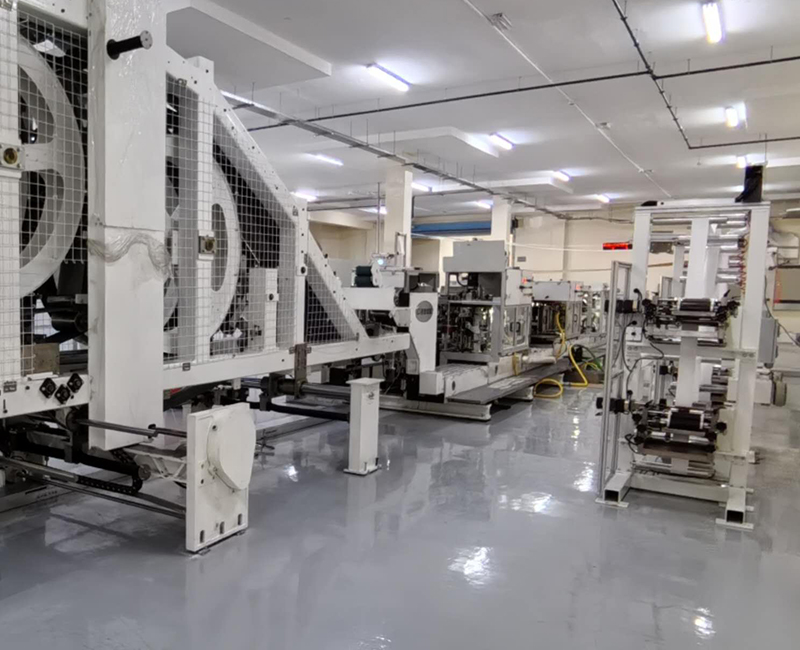Innovations in Flat Bottom Paper Bag Machinery: Efficiency and Sustainability in Modern Packaging
Release time:2025-05-26 Classification:Knowledge
The global shift toward eco-conscious consumerism has driven significant advancements in packaging technology, with flat bottom paper bag machines emerging as a cornerstone of sustainable manufacturing. These specialized machines combine precision engineering, automation, and material efficiency to produce versatile, durable paper bags that meet the demands of diverse industries. This article explores the mechanics, benefits, and evolving applications of flat bottom paper bag machinery, highlighting its role in modern production ecosystems.

Understanding Flat Bottom Paper Bag Machines
A flat bottom paper bag machine is a fully automated system designed to convert rolls of paper into finished flat-bottomed bags. Unlike traditional V-bottom or pinch-bottom designs, flat bottom bags feature a reinforced base that allows them to stand upright, maximizing storage convenience and visual appeal. The machine’s workflow typically includes paper feeding, printing (if integrated), creasing, gluing, folding, and bottom sealing—all synchronized to ensure consistent output speeds of 50–150 bags per minute, depending on the model.
Key components of these machines include:
- Unwinding Unit: Precisely feeds paper rolls while maintaining tension control.
- Printing System: Optional flexographic modules for custom branding or labeling.
- Creasing and Cutting Assembly: Creates fold lines and trims paper to required dimensions.
- Bottom Forming Station: Shapes and secures the bag’s flat base using heat or adhesive.
- Stacking and Counting Unit: Automates output organization for downstream packaging.
Technical Advancements Driving Performance
Modern flat bottom paper bag machines integrate cutting-edge technologies to optimize productivity and reduce waste:
1. Adaptive Automation
Advanced servo motors and PLC (Programmable Logic Controller) systems enable real-time adjustments for bag size, handle attachment, or material thickness. This flexibility minimizes downtime during product changeovers, making the machines ideal for small-batch custom orders.
2. Energy-Efficient Operations
Innovations like infrared drying systems and low-heat adhesives cut energy consumption by up to 30% compared to conventional models. Some machines also incorporate regenerative braking systems to reuse kinetic energy from high-speed components.
3. Precision Material Handling
Laser-guided alignment systems ensure accurate paper positioning, reducing misprints or folding errors. Additionally, anti-static devices prevent paper jams in low-humidity environments.
4. Sustainability Integration
Compatibility with recycled, FSC-certified, or biodegradable papers allows manufacturers to align with circular economy goals. Waste-reduction features, such as edge-trim recycling and glue optimization algorithms, further enhance eco-efficiency.
Applications Across Industries
Flat bottom paper bags are prized for their structural integrity and aesthetic versatility. Machines producing these bags cater to:
- Retail: Durable bags for clothing, cosmetics, and luxury goods.
- Food Service: Grease-resistant options for baked goods or takeout.
- Industrial Packaging: Heavy-duty designs for hardware or agricultural products.
The ability to customize handle types (twisted, flat, or ribbon), sizes, and prints makes these bags a branding asset while meeting functional requirements.
Operational Considerations for Manufacturers
Investing in a flat bottom paper bag machine requires evaluating:
- Throughput Needs: High-speed models suit large-scale operations, while modular machines offer scalability for growing businesses.
- Material Compatibility: Ensure the machine supports intended paper weights (typically 60–200 GSM) and adhesive types.
- Maintenance Protocols: Look for self-diagnostic systems and easily accessible components to minimize service interruptions.
Future Trends in Bag Manufacturing
As regulations on single-use plastics tighten globally, demand for paper-based alternatives will continue to rise. Next-generation flat bottom paper bag machines are expected to incorporate AI-driven quality control, predictive maintenance, and blockchain-enabled material tracking to enhance transparency. Additionally, hybrid systems capable of processing alternative fibers (e.g., bamboo or hemp) are under development, further broadening sustainable material options.
Flat bottom paper bag machines represent a fusion of innovation and environmental responsibility, offering manufacturers a competitive edge in an increasingly eco-aware market. By delivering high-speed production, customization capabilities, and resource efficiency, these machines not only meet current packaging needs but also pave the way for a greener industrial future. As technology evolves, their role in reducing reliance on plastics and promoting reusable solutions will undoubtedly expand, solidifying their status as indispensable tools in modern manufacturing.






